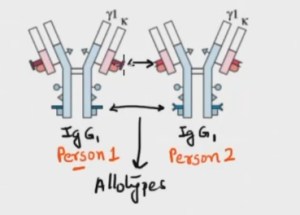Blood Plasma & Blood Serum – What is the Difference?
In this post we will talk about the difference between blood plasma and blood serum. To understand this let’s start with blood itself. Basic definition of blood says that blood is a liquid connective tissue composed of liquid matrix in which all the blood cells and fragments are suspended. This liquid matrix is called PLASMA.
Therefore, BLOOD = PLASMA + CELLS
Wait, let’s make it more clear. Let’s see what all is present in blood by subjecting it to centrifugation. Centrifugation will separate all the blood components based on their size and density as shown in figure 1.

Figure 1. Centrifugation of Blood Sample Mixed with Anticoagulant
After centrifugation, we can see three layers. Bottom layer is RBC which is about 45%, middle layer is called buffy coat which is <1% and is comprises of WBC and platelets. The top most layer is PLASMA which is about 55% (liquid matrix as we talked about). Plasma consists of 90% water, 8% proteins which are albumin, globulin and fibrinogen (an important clotting factor) and 2% electrolytes, vitamins, gases, nutrients, hormones, regulatory proteins.
One important point to note over here is when we subject the blood sample for centrifugation to separate plasma, we need to mix it with anticoagulants such as EDTA or heparin to avoid the blood from clotting.
What is serum? Serum is plasma devoid of fibrinogen. So how do we get serum from blood? To obtain serum, take the blood sample and allow it to clot (do not add any anticoagulant). When we say allow it to clot, it means just keep it standing for about 30 minutes without adding any anticoagulants followed by centrifugation of the blood sample.
After centrifugation, we will see two layers separated. The bottom layer which is a blood clot and the top layer is SERUM as shown in figure 2. So as you can see, the components of serum are same as plasma except for fibrinogen because the blood is clotted. Therefore, the serum doesn’t have fibrinogen.

Figure 2. Centrifugation of Blood Sample without Anticoagulant
Therefore, SERUM = PLASMA – FIBRINOGEN
In summary,
PLASMA is obtained by centrifuging anticoagulated blood.
Anticoagulants such as EDTA, heparin is needed.
Fibrinogen is present.
SERUM is obtained by centrifuging coagulated blood (after blood is allowed to clot).
Anticoagulants are not needed.
Fibrinogen is absent.
I hope this post helps 🙂
To understand more in detail, watch a video on this topic here.




You must be logged in to post a comment.